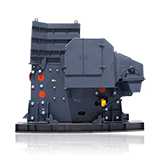Best Ways to Reduce Quarry Processing Dust
Quarrying is a crucial industry that supplies raw materials for construction, infrastructure development, and other sectors. However, the processing activities in quarries often result in substantial dust generation. Dust particles, ranging from fine respirable fractions to coarser particles, can have detrimental effects on air quality, human health, and the surrounding environment. Therefore, it is essential to adopt effective dust - reduction strategies in quarry processing.
This article explores various effective strategies to mitigate dust emissions during different stages of quarry processing, including extraction, crushing, screening, and transportation. By implementing these measures, quarry operators can enhance environmental sustainability and safeguard the well - being of workers and nearby communities.

Dust Generation Sources in Quarry Processing
1. Extraction Phase
During the extraction of rocks and minerals from the quarry face, the use of blasting, drilling, and excavating equipment can generate large amounts of dust. Blasting operations, in particular, produce a significant instantaneous release of dust as the explosive force shatters the rock mass. Drilling holes for blasting also creates dust as the drill bit penetrates the rock, and excavators moving the blasted material can stir up dust from the ground.
2. Crushing and Screening Phase
Crushing machines, such as jaw crushers, cone crushers, and impact crushers, break large rocks into smaller pieces. The impact and friction during the crushing process cause rock particles to disintegrate further, releasing dust. Screening equipment, which separates the crushed materials into different size fractions, also generates dust as the materials move across the vibrating screens.
3. Transportation Phase
The movement of raw materials and processed aggregates within the quarry, as well as their transportation to external destinations, can contribute to dust emissions. Haul trucks traveling on unpaved roads can create dust due to the disturbance of the road surface, and the loading and unloading of materials at stockpiles or onto trucks can also generate dust.
How to Reduce Dust During Quarry Processing?
1. Water Spraying and Mist Systems
One of the most common and effective methods for dust control is the use of water - based systems. Water spraying can be applied at various stages of quarry processing. For example, during drilling, water can be injected through the drill bit to suppress the dust generated as the rock is being drilled. In the crushing and screening areas, fixed or mobile water - spraying nozzles can be installed to wet the materials and reduce dust emissions. Mist systems, which produce fine water droplets, are also effective in capturing and suppressing airborne dust particles. These systems can be strategically placed around crushers, screens, and conveyor transfer points.
2. Enclosure and Ventilation
Enclosing dust - generating equipment, such as crushers and screens, can significantly reduce the spread of dust into the surrounding environment. The enclosed structures can be equipped with ventilation systems that draw in the dust - laden air and filter it through dust collectors. Cyclone dust collectors, bag - house filters, and electrostatic precipitators are commonly used in quarry ventilation systems. These devices remove the dust particles from the air stream, allowing the clean air to be released back into the atmosphere while collecting the dust for proper disposal.
3. Road Maintenance and Management
Maintaining the haul roads within the quarry is crucial for reducing dust emissions during transportation. Regularly watering the unpaved roads can keep the surface moist and prevent dust from being kicked up by the trucks. Additionally, using road - stabilizing materials, such as calcium chloride or asphalt emulsions, can help bind the road surface particles together, reducing dust generation. Implementing speed limits for trucks on the quarry roads can also minimize the dust - raising effect of vehicle movement.
4. Dust - Suppressant Additives
Dust - suppressant additives can be used in combination with water spraying to enhance the dust - control effect. These additives, such as polymers, surfactants, and hygroscopic salts, can improve the wetting ability of water, increase the adhesion of dust particles to each other, and prevent the re - suspension of settled dust. For example, some polymers can form a thin film on the surface of dust particles, binding them together and reducing their ability to become airborne.
5. Equipment Modification and Optimization
Upgrading and optimizing the quarry processing equipment can also contribute to dust reduction. For instance, modern crushers with improved design features can reduce the amount of dust generated during the crushing process. Some crushers are equipped with built - in dust - collection systems or are designed to minimize the gap between the crushing components, reducing the escape of dust. Similarly, optimizing the operation of screening equipment, such as adjusting the vibration amplitude and frequency, can reduce dust generation.
6. Employee Training and Safety Measures
Properly training employees on dust - control measures and safety procedures is essential. Workers should be educated about the health risks associated with dust exposure and be trained on how to operate and maintain the dust - control equipment effectively. Providing personal protective equipment (PPE), such as dust masks, goggles, and protective clothing, to workers can also help protect them from dust exposure.
Reducing dust during quarry processing is a multi - faceted challenge that requires a combination of technical, operational, and safety measures. By implementing water - spraying systems, enclosure and ventilation, road maintenance, dust - suppressant additives, equipment modification, and employee training, quarry operators can significantly reduce dust emissions. This not only helps to protect the environment and the health of workers and nearby communities but also improves the overall efficiency and sustainability of the quarrying operation. As environmental regulations become more stringent and awareness of health risks increases, continuous efforts in dust - reduction strategies will be necessary for the long - term viability of the quarrying industry.







